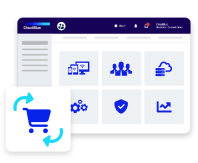Customer attrition, often referred to as churn, happens when customers stop using a company’s products or services over time.
In the SaaS industry, this is a critical metric because recurring revenue depends on retaining subscribers. Businesses track attrition rates to understand how well they maintain their customer base and identify any underlying issues causing users to leave.
For example, if a SaaS company starts the year with 1,000 subscribers and loses 100 by year-end, its customer attrition rate would be 10%. Understanding this metric helps businesses assess the health of their subscription model.
Causes of Customer Attrition
Several factors contribute to customer attrition, and pinpointing the exact reasons requires detailed analysis. Common causes include poor customer service, lack of product updates, better competitor offers, and misaligned expectations. In the SaaS world, technical issues like downtime, bugs, and limited features can push users to switch providers.
Other causes can be industry-specific. For instance, seasonal businesses may naturally experience higher attrition during off-peak times. Companies need to conduct regular customer feedback surveys and performance reviews to uncover what drives their attrition.
How to Calculate and Reduce Attrition
Calculating the attrition rate is straightforward using this formula:
Attrition Rate = (Number of Customers Lost During a Period / Total Customers at the Start of the Period) × 100
This calculation provides a clear picture of customer retention performance. Businesses should analyze this rate frequently and compare it against industry benchmarks.
To reduce customer attrition, companies should focus on improving customer experience, enhancing product features, offering personalized solutions, and maintaining competitive pricing. Developing a customer retention model that predicts potential churn through behavior analysis and engagement tracking can also help prevent losses before they occur.













